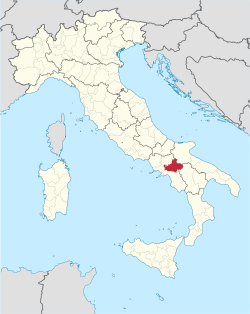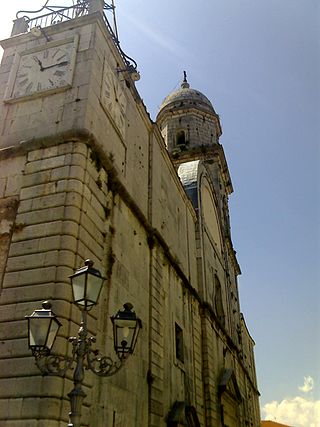
Nusco is a town and comune in the province of Avellino in the south of Italy, east of Naples, with a population of around 4,100. It is situated in the mountains between the valleys of the Calore Irpino and Ofanto rivers. It is one of I Borghi più belli d'Italia.
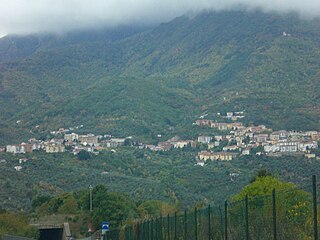
Calabritto is an Italian town and a commune in the province of Avellino, Campania, Italy. It occupies a hilly-mountainous area at the eastern tip of the Monti Picentini range, in the upper Sele valley.
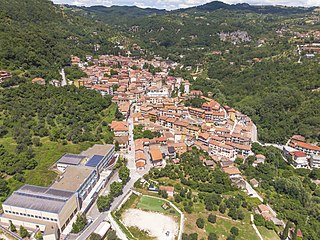
Caposele is a town and comune in the province of Avellino, Campania, Italy. The town was seriously damaged by the 1980 Irpinia earthquake.

Carife is a town and comune in the province of Avellino, Campania, Italy. In the year 2001, the population was 1,697.
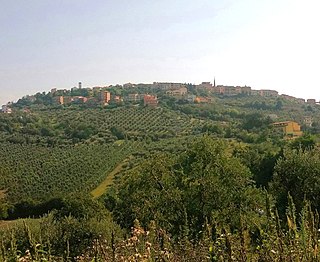
Flumeri is a town and comune in the province of Avellino, Campania, southern Italy.

Lioni is a town and comune in the province of Avellino, Campania, southern Italy.

Tufo is a town and comune in the province of Avellino, Campania, southern Italy. As of 2009 its population was of 938.
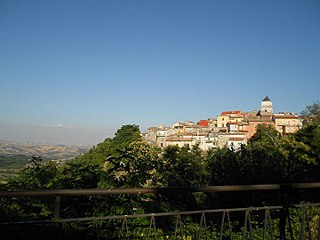
Guardia Lombardi, known as La Uàrdia in the Irpinian dialect, is a small town and comune in the Province of Avellino in Campania, Italy. At an elevation of 998 metres (3,274 ft), it is located in Irpinia in the Apennine Mountains of Southern Italy. It has experienced a number of major earthquakes throughout its history that have devastated the town, and is considered within zone 1 of the Protezione Civile's seismic classification index, indicating very high seismicity.

Melito Irpino is a town and comune in the province of Avellino, in the Campania region of south-western Italy.
Mirabella Eclano is an Italian town and comune of the province of Avellino, in the Southern Italian Campania region. As of 2011 its population was of 7,904.

San Nicola Baronia is a town and comune in the province of Avellino, Campania, southern Italy.

San Sossio Baronia is a town and comune in the province of Avellino, Campania, Italy. Its name refers to Saint Sossius, a Roman Catholic martyr.

Sant'Angelo dei Lombardi is a town and comune in the province of Avellino in the Campania region of southern Italy. It has been a historical spot of significance in mezzogiorno history.

Villanova del Battista is a town and comune in the province of Avellino, Campania, southern Italy.
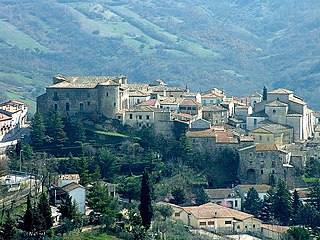
Zungoli is a town and comune in the province of Avellino, Campania, southern Italy, about 58 kilometres (36 mi) from the town of Avellino.

Irpinia is a geographical and cultural region of Southern Italy. It was the inland territory of the ancient Hirpini tribe, and its extent matches approximately today's province of Avellino.

The Monti Picentini Regional Park is a natural preserve in Campania, southern Italy.
The ecclesiastical region of Campania is one of the sixteen ecclesiastical regions of the Catholic Church in Italy. It consists of three ecclesiastical provinces, twenty-two dioceses, one territorial prelature, and two territorial abbeys. Its territory roughly corresponds with the Italian Republic homonymous region's one.
Pasquale Cascio is an Italian ordinary of the Catholic Church. He currently serves as the Archbishop of Sant'Angelo dei Lombardi-Conza-Nusco-Bisaccia.
Cristoforo Domenico Carullo, was an Italian Catholic prelate and a Franciscan friar. He served as the Bishop of Lacedonia from 1940 to 1968 and as the Archbishop of Conza-Sant'Angelo dei Lombardi-Bisaccia from 1946 to 1968.

